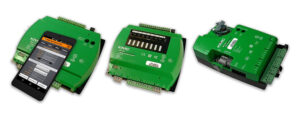Understanding the Basics of Building Automation Systems
The concept of smart buildings has rapidly evolved in recent years, with Building Automation Systems (BAS) emerging as a key driver of this transformation. But what is BAS, and how does it make buildings more efficient, sustainable, and adaptable? Below, we’ll define BAS, explore its components, and uncover the many ways these systems are optimizing building operations.
What does BAS stand for?
BAS stands for Building Automation System, a centralized network of hardware and software designed to monitor and control building environments across commercial, industrial, and institutional facilities. Also referred to as Building Management Systems (BMS), Building Control Systems (BCS), or Building Automation and Control Systems (BACS), they all share the common goal of improving operational performance, comfort, and safety.
By connecting HVAC, lighting, security, and other functions, a BAS serves as the building’s central nervous system. It integrates sensors, controllers, and management software—typically using Direct Digital Control (DDC) methods—to operate intelligently and often autonomously.
In smart buildings, this system becomes a platform for managing energy, occupant experience, and compliance. Some BAS implementations now incorporate open protocols like BACnet, an ASHRAE standard that ensures interoperability between devices from different manufacturers.
How do Building Automation Systems work?
A BAS functions as a layered system built on three key components:
- Sensors: Gather environmental data such as temperature, humidity, occupancy, and pressure.
- Controllers: Process this input and make real-time adjustments to connected equipment (e.g., adjusting HVAC output).
- Interfaces and Software: Let facility managers monitor and fine-tune building performance, often via web-based dashboards or mobile apps.
 Increasingly, BAS implementations rely on edge controllers with local processing power and cloud connectivity for real-time analytics, remote access, and mobile control capabilities.
Increasingly, BAS implementations rely on edge controllers with local processing power and cloud connectivity for real-time analytics, remote access, and mobile control capabilities.
These systems are installed during new construction or renovations and often replace outdated pneumatic systems. Transition strategies, such as pneumatic-to-DDC bridging, allow legacy systems to upgrade gradually.
What are the core functions of a BAS?
 HVAC Control
HVAC Control
HVAC is the cornerstone of any BAS. It includes managing chillers, boilers, AHUs, RTUs, VAVs, and more. A BAS continuously adjusts these systems based on occupancy and environmental data, improving energy use and ensuring compliance with air quality standards.
In FDA-regulated environments, BAS plays a critical role in maintaining validated environmental conditions (e.g., temperature, humidity, and pressure). These “critical parameters” ensure quality in pharmaceutical manufacturing, help avoid product loss, and improve operational efficiency.
Lighting Automation
Lighting control via motion sensors and schedules is a quick win for energy efficiency. Advanced systems also support daylight harvesting, reducing energy use by adjusting artificial lighting based on natural light availability.
Security and Access Control
Modern BAS platforms often include or integrate with:
- CCTV systems
- Card and keypad access controls
- Alarm systems
Integration with identity management systems ensures zone-specific security, a must for sensitive or regulated environments.
Energy Management
BAS platforms collect and analyze energy data across systems, providing visual dashboards and usage patterns. This helps facility managers identify inefficiencies, reduce carbon footprints, and align with certifications like LEED and ENERGY STAR.
Some systems even allow for real-time correction of environmental deviations—especially critical in life science facilities where consistent conditions are mandatory for quality assurance.
What are the benefits of Building Automation Systems?
Energy Savings
Optimized HVAC and lighting operations can dramatically cut energy consumption. With tools to benchmark energy performance and track greenhouse gas emissions, a BAS contributes directly to environmental goals and cost reduction.
Real-Time Monitoring and Insights
With real-time data from across the building, issues are detected and addressed faster. In regulated environments, this includes logging critical parameters and maintaining audit trails to comply with standards such as Title 21 CFR Part 11.
Seamless System Integration
Open systems allow integration between devices and platforms—but don’t confuse “open” with “plug-and-play.” Integration still requires skilled professionals and careful planning. Common open protocols like BACnet, Modbus, and LonWorks make interoperability possible, but not automatic.
Tools like Tridium’s Niagara Framework serve as integration middleware, enabling unified control across multiple manufacturers and systems. This empowers facility-wide management without locking the customer into one vendor.
Improved Occupant Comfort
Through zone-based control and real-time feedback, BAS improves the comfort of occupants by regulating temperature, lighting, and air quality—factors shown to influence productivity and well-being.
Scalability and Flexibility
From a single building to a campus or enterprise, modern BAS platforms are designed to scale. With cloud-based options, modular design, and open standards, expanding or upgrading your system becomes more efficient and cost-effective.
For FDA-regulated spaces, BAS can be structured with logical “boundaries” to separate validated and non-validated zones, allowing for compliance without overcomplication.
Why choose KMC Controls for your BAS needs?
KMC Controls is one of the few independent manufacturers still active in a market increasingly dominated by consolidation. We’ve remained agile, innovative, and focused on delivering open, interoperable solutions tailored for modern building challenges.
Our flagship solutions include:
- KMC Commander® – Cloud-native visualization and analytics for IoT devices
- KMC Conquest® – Next-gen BACnet controllers with edge computing capabilities
- KMC Connect® – Streamlined configuration and deployment tools
We’ve helped customers—including life sciences firms—reduce staffing costs, eliminate manual processes, and improve regulatory compliance. Whether you’re upgrading a single site or managing validated zones in a pharmaceutical plant, KMC provides the tools and expertise to deliver results.
Final Thoughts
A well-implemented BAS is a cornerstone of smart building performance. It provides energy savings, enhanced comfort, regulatory compliance, and centralized control—transforming the way facilities are managed.
Whether you’re pursuing sustainability goals, modernizing aging infrastructure, or planning a regulated facility, KMC Controls is your trusted partner in building automation.
Let’s make your building smarter, more efficient, and future-ready.
Other BAS Resources from KMC Controls:

“Seven Ways to Help Secure Your Building Automation System”
 Cart
Cart


